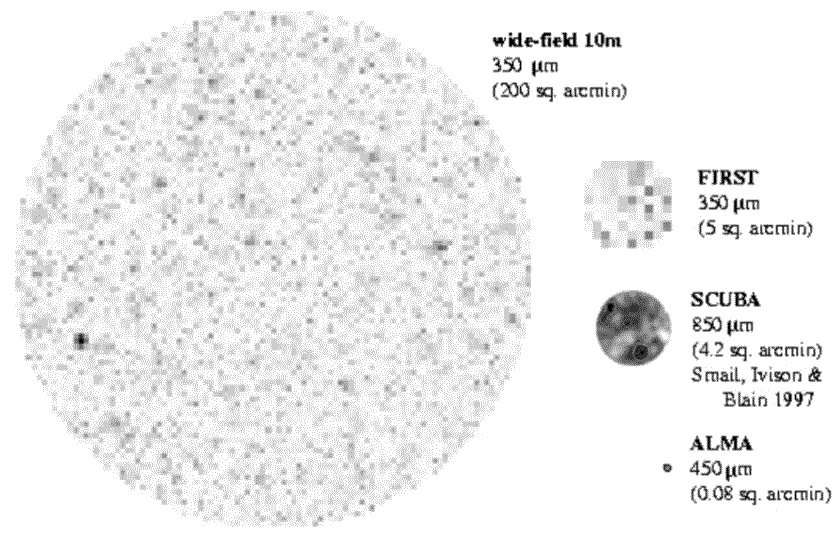|






| |
|
Large focal-plane arrays
|
|
|
|
|
|
The emerging technology of focal-plane arrays will
dramatically increase the sensitivity and speed of single-dish
submillimeter-wave telescopes in the next decade. The SPST design
fully exploits this new technology, by providing a large field of
view. The current generation of array
receivers, SCUBA
and SHARC, are
producing impressive results.
The 10 meter telescope could feed a bolometer array with as many as 10,000 pixels. |
|
|
|
|
| Instrument |
Current Status |
Number of detectors, n |
| SCUBA |
operational |
128 |
| BOLOCAM |
in development |
151 |
| SAFIRE |
in development |
2,048 |
| SPECS |
proposed |
60,000 |
|
|
|
|
The large jump in n between the current
version of BOLOCAM and SAFIRE reflects the development of cryogenic
multiplex readouts. |
|
|
|
|
|
|
|

Image Sizes of Submillimeter-wave Telescopes. Simulated images from the SPST
and
FIRST are compared to SCUBA results
and the image size of the ALMA. The simulated data for
SPST and FIRST are the Guiderdoni
protogalaxy Scenario B model observed to an
rms noise level of 1 mJy per pixel with a broad-band bolometer array. This noise level is attainable with about two hours of on-source time
at the SPST and 20 minutes of on-source time with FIRST. It is assumed that the protogalaxies are Gaussian distributed (i.e., not clustered).
A black pixel corresponds to 78 mJy, a white pixel is 0 mJy, and the
greyscale is linear. The wide-field 10m plot shows over 500 individual sources
at the 5s level.
|